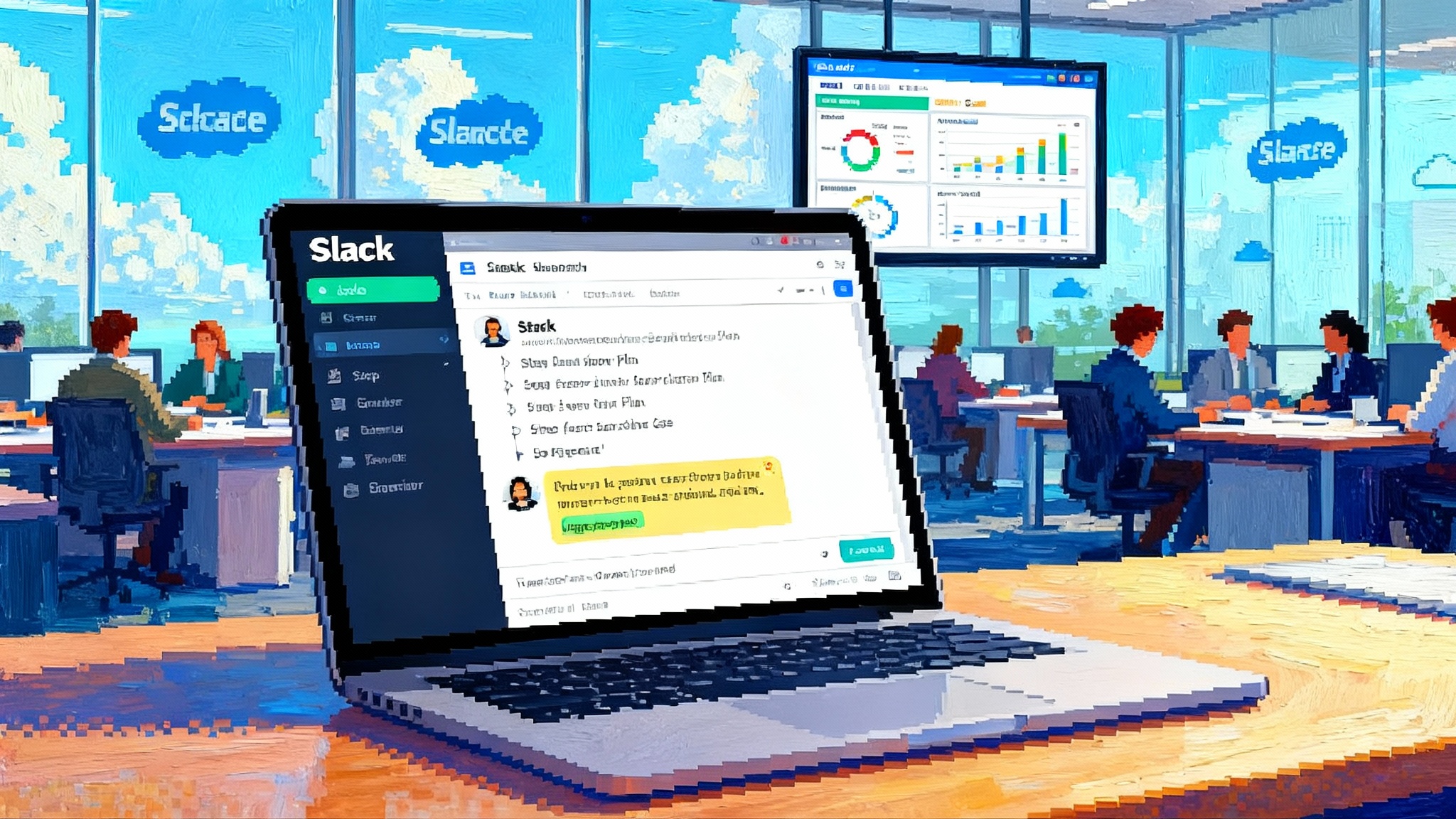DeepL Agent Goes GA, Multilingual Automation Hits the Enterprise
DeepL launched its enterprise agent with broad language coverage and European governance, positioning it as a task‑taking coworker that operates across your existing apps. Here is how this changes CRM, ERP, and the future of automation.

Breaking: DeepL graduates from translator to task‑taking coworker
On November 6, 2025, DeepL took a decisive step into the agent era by making its enterprise agent generally available, pairing broad language coverage with controls that align to European data protection expectations. The company framed the product as an autonomous coworker that can plan, click, type, and orchestrate work across the apps employees already use. It also announced an expansion to more than one hundred languages, signaling a push from understanding prompts to doing end‑to‑end work across markets and back offices. For details, see how DeepL announces enterprise agent GA. The governance stance echoes a sovereign agent runtime in Europe, which many multinational buyers now expect.
The message is clear. Multilingual agents are not a novelty attached to translation. They are becoming a serious enterprise automation layer. The impact will be felt first in the systems where language still creates friction every day, like customer service, sales outreach, procurement, and localization. It will also reach any workflow that involves reading, reasoning, and operating software.
From words to work: what changes with a multilingual agent
A classic translator answers a question and stops. An enterprise agent parses that question, forms a plan, and takes action. Think of it as the difference between a helpful colleague who drafts a note and a colleague who also logs into your systems, updates the case, sends the note, and files a record of what it did.
DeepL’s positioning around European governance is not just branding. The company is headquartered in Germany, has long marketed compliance with the General Data Protection Regulation, and now presents Agent as a product that respects enterprise guardrails such as data processing agreements, auditability, and in‑region controls for European tenants. Even if the exact toggle settings vary by customer, that posture matters for multinational buyers whose procurement teams start every conversation with privacy, residency, and logging.
Prediction 1: Multilingual agents will displace brittle RPA
Robotic process automation promised to click the buttons humans click. It worked for predictable, form‑based tasks, but too often broke when a page layout shifted or a label changed. Anyone who has maintained a large portfolio of RPA scripts knows the pain of selectors, hidden modals, and surprise pop‑ups. Localization only made it harder, since an English‑trained bot often failed on non‑English interfaces.
Multilingual agents approach the same problem from the opposite direction. Instead of hard‑coded instructions tied to a specific pixel or XPath, they combine reasoning, vision, and language to infer intent from what is on screen or in an application interface. When the button text changes from Submit to Send, or the interface switches from Portuguese to Polish, a language‑fluent agent can still complete the task because it understands the meaning of the elements, not just their coordinates.
Consider three concrete scenarios:
- Claims processing across markets: the agent reads images, emails, and forms in Italian, extracts the fields, opens the insurer’s internal portal, fills the claim, and attaches the evidence. If a new consent checkbox appears after an update, the agent reasons through it and confirms compliance before submitting.
- Sales operations: the agent scans Japanese inbound leads, enriches records from a data provider, drafts outreach in Japanese and English, updates the customer relationship management system, and schedules a follow‑up on the calendar. If the layout of the email client changes, the agent locates the compose action by meaning rather than by a brittle selector.
- Support triage: the agent reads tickets in multiple languages, resolves what it can by following policies, and hands off edge cases with a clean summary. Localization of knowledge articles becomes part of the loop, not a separate project.
In each case, the value is not a faster translation. It is automation that survives user interface drift, language variation, and real‑world messiness.
Prediction 2: By 2026, agents will sit between users and CRM or ERP
Agents will become the de facto middleware for line‑of‑business work. Instead of forcing a human to open five tabs to push a process through, the agent will become the operator that navigates across systems on behalf of a person or team. For a practitioner’s view of this pattern, see how Agentforce 360 makes enterprise agents.
Here is the likely architecture:
- A secure agent runtime with its own virtual browser and keyboard for screen‑level work plus connectors for application programming interfaces when available.
- A policy layer that enforces who the agent can act as, what systems it can touch, and what categories of actions require approval.
- Observability with complete execution traces, so leaders can answer the questions that auditors will ask: what did the agent do, when, on whose behalf, and under which policy. This aligns with industry work on AgentOps with self-healing and observability.
- Language intelligence that normalizes content across markets so the same workflow can run globally with minimal per‑locale engineering.
Vendors have started formalizing this stack. Amazon introduced a production‑grade platform to build and operate agents across tools, identity, and observability in October, and it is now generally available as Amazon Bedrock AgentCore is available. OpenAI has also moved beyond chat into agents that plan and act for users. DeepL’s entrance adds a new angle: the agent is multilingual by default and arrives with a reputation for careful handling of enterprise language data.
If you own the customer relationship management or enterprise resource planning backbone, the implication is practical. The shortest path to productivity is no longer another custom form or workflow rule. It is an agent that learns your data model, uses your interfaces, and can carry out multi‑step tasks without waiting for a developer to build a bespoke integration.
The governance turn: why DeepL pressures OpenAI and AWS
Procurement in 2025 is a risk exercise. Enterprises now evaluate agents with the same rigor as any system that can take actions in sensitive environments. DeepL’s European stance puts pressure on its competitors in three areas:
- Data residency and control: buyers will ask for at‑rest storage choices by region, clear default retention windows, and the ability to keep execution traces inside their cloud boundary. If one vendor offers this as a standard part of the enterprise agent package, others will be pushed to match.
- Identity and impersonation: agents must prove who they act as, and that proof must be traceable for audits. Expect customers to demand first‑class support for single sign‑on, short‑lived credentials, and permissions that can be scoped to tools and actions.
- Policy transparency: enterprises will want a declarative way to constrain what an agent can do, and to review those policies in change management. Hidden toggles will not pass a security review.
The competitive dynamic is not about which model speaks the most languages. It is about whose agent stack ships with controls that a chief information security officer can sign off on without months of custom work.
The real risks and how to manage them
Agent hype can obscure operational realities. Three risks matter most right now.
- Cost runaways
Autonomous work splits tasks into many steps, which can multiply inference calls and tool executions. A single customer service case might fan out into a dozen model calls, database lookups, and web interactions. Without controls, costs creep silently.
What to do:
- Set budgets at the task, project, and monthly levels. If the agent exceeds a per‑task ceiling, it must stop, summarize what it tried, and ask for approval.
- Adopt cost‑aware planning. Teach the agent to choose cheaper tools when equivalent, to reuse retrieved context, and to cap the depth of web exploration.
- Cache by design. For deterministic transforms like currency conversions or date normalization, use a rules engine or a local function, not a model call.
- Measure cost per resolution, not per token. Tie spend to business outcomes like issues resolved or qualified leads created, which reveals where to optimize.
- Oversight gaps
An agent that can click and type can also misclick and mistype. Without visibility, errors are discovered by users when it is too late.
What to do:
- Record rich traces. Every action needs a log entry with inputs, outputs, and the policy that allowed it. Store replayable screen videos for high‑risk flows.
- Build an approvals ladder. Define which actions are always autonomous, which require just‑in‑time human review, and which are outright blocked.
- Introduce an emergency brake. Give owners the ability to kill current runs and pause new ones across a workspace in one click.
- Align on accountability. Treat the agent like a service account with an owner, on‑call coverage, and a documented change process.
- Evals for action safety
Benchmarks that measure text quality are not enough. Action safety requires tests that simulate real tools, real data, and real failure modes.
What to do:
- Build a sandbox with your actual tools. Use mocks for payment, shipping, and deletion actions so you can test dangerous paths without consequences.
- Create scenario libraries. Codify tricky cases like ambiguous customer intent, confusing product names, and interface changes. Re‑run these tests after every model or policy update.
- Score outcomes, not just steps. An agent that follows every intermediate instruction but cancels the wrong order still failed.
- Track regressions. Keep a history of eval scores and block rollouts when action safety dips below your threshold.
A practical playbook for the next 90 days
If you run a line‑of‑business team or platform group, here is a concrete plan to move from demos to durable value.
Weeks 1 to 2: choose where language is the bottleneck
- List the top five workflows where translation, localization, or multi‑system copy‑paste creates measurable delays. Examples include triaging cross‑language support tickets, reconciling supplier invoices from different countries, or migrating content between marketing systems.
- Identify the systems involved. Name the user interfaces, application programming interfaces, permissions, and data sources.
- Define success in business terms. For instance, reduce case handle time by 30 percent while keeping customer satisfaction flat or better.
Weeks 3 to 6: assemble the agent runway
- Provision a secure agent runtime. This can be vendor provided or self‑hosted. Put it behind single sign‑on, restrict network access, and enable workspace‑level logging.
- Wire the first three tools. Start with read‑only access. Add write access only after basic evals pass.
- Implement a policy file. Write explicit allow and deny lists by tool, dataset, and action category. Make this reviewable like code.
- Sketch the evals. Build ten happy‑path scenarios and ten edge cases. Include one destructive test in the sandbox for each tool to validate guardrails.
Weeks 7 to 10: pilot and harden
- Run a small human‑in‑the‑loop pilot with real users. Require approvals on any irreversible action.
- Add cost and throughput dashboards. Track cost per resolved item and average steps per task.
- Iterate on prompts and tool descriptions. Most agent errors come from vague tool affordances. Name actions precisely and document side effects.
Weeks 11 to 12: expand the blast radius
- Remove approvals for the few actions that consistently pass evals with strong margins.
- Add the next group of tools. Keep write access constrained, and repeat the eval cycle.
- Brief your audit and legal teams. Show them the logs, policies, and kill switch. Get their input before scale‑up.
What this means for vendors and buyers
For platform vendors:
- Ship governance as a product, not a promise. Publish clear data residency options, retention defaults, and policy configuration that a customer can check into version control.
- Treat identity as the spine. Support action‑scoped permissions, short‑lived tokens, and user impersonation that is visible in logs.
- Make observability boring. Customers need to answer audit questions with one search, not a scavenger hunt through multiple consoles.
For buyers:
- Standardize on an agent gateway pattern. Put a single service in front of your tools that brokers identity, policy, and observability for all agents, regardless of vendor.
- Require replayable logs in contracts. If a vendor cannot show you what an agent did step by step, you will end up flying blind.
- Ask for multilingual acceptance tests. If you operate in five languages, your eval suite must cover all five. Do not accept English‑only demos for global workflows.
The road to 2026
Three forces are aligning. Language coverage is becoming a baseline feature. Agent runtimes are industrializing with proper identity, observability, and long‑running execution. And enterprises are codifying oversight and cost control. That is why multilingual agents will push past brittle scripts and become the default way to automate in customer relationship management and enterprise resource planning by 2026.
DeepL’s launch matters because it reframes language intelligence as an operational edge, not just a feature for translators. Amazon’s enterprise‑grade stack and OpenAI’s move into action‑taking agents mean the platforms are ready to carry this weight. The winners will be the vendors that ship both brains and brakes: strong reasoning and language capabilities paired with residency, policy, and traceability that a global company can trust.
The bottom line
A year from now, many teams will open a ticket or a lead and see not a blank form but an agent that has already done most of the work. The biggest surprises will not be in what agents can write. They will be in what agents can do safely, repeatedly, and across languages without breaking. The companies that start today with careful pilots, real evals, and hard cost guardrails will be the ones ready when agents stop being an experiment and start being the interface for work.








